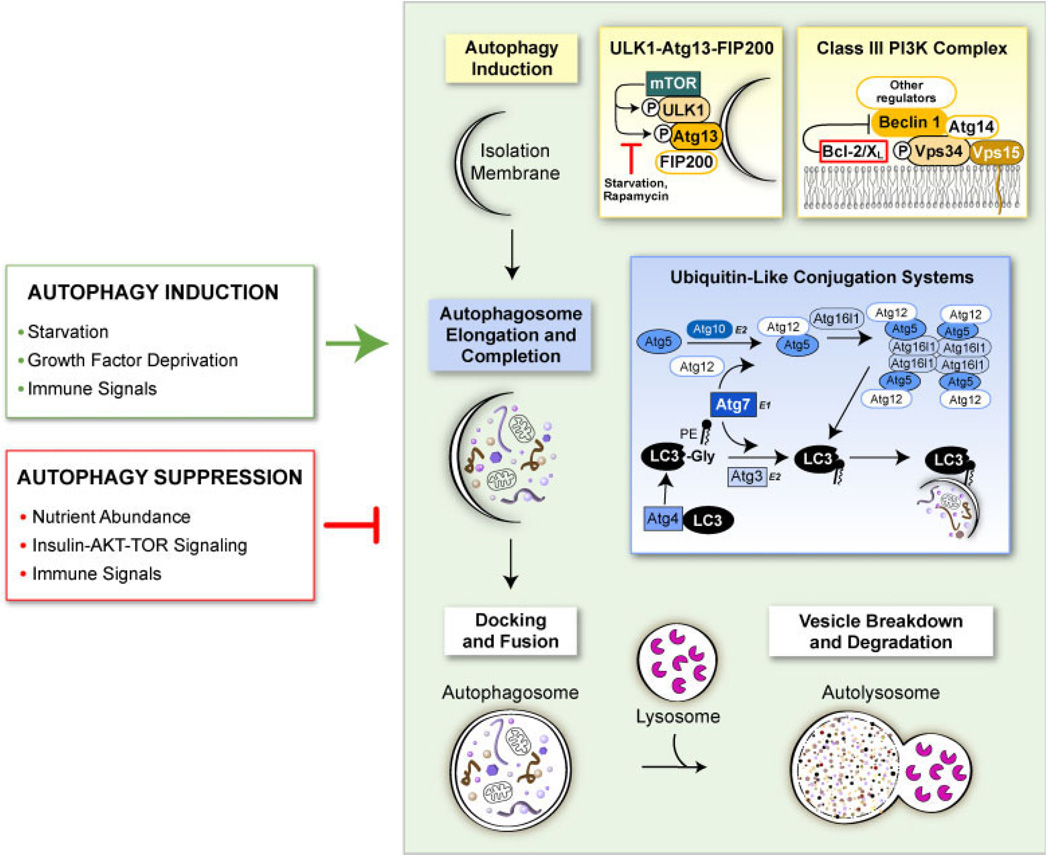Figure 1.
Scheme of the autophagy pathway. The process of autophagy begins with the nucleation of an autophagic isolation membrane that eventually encloses the cytoplasmic and/or microbial cargo destined for lysosomal degradation. The mammalian target of rapamycin (mTOR) kinase plays a major role in suppressing autophagy induction by binding to ULK1-Atg13-FIP200 complexes and hyper-phosphorylating ULK1 and Atg13. Under autophagy promoting conditions such as starvation, mTOR does not associate with the ULK1-Atg13-FIP200 complex, leaving ULK1 and Atg13 hypo-phosphorylated, which allows the isolation membrane to expand. Vesicle nucleation is also promoted through the activation of the class III phosphatidylinositol 3-phosphate (PIP3) kinase Vps34 which contains the essential mammalian autophagy proteins Beclin 1 and Atg14. The Vps34-Beclin 1-Atg14 complex creates PIP3 residues on the isolation membrane that serve as docking sites for other autophagy-promoting proteins. Other proteins bind to this minimal class III PI3K complex to regulate autophagy and other membrane-trafficking processes, including Bcl-2 family members that function as important inhibitors of autophagy. The second major step of autophagy involves the elongation of the isolation membrane to form an autophagosome which has two phospholipid bilayer membranes with the selected cargo sequestered within the inner membrane. Two ubiquitin-like conjugation systems mediate this step by modifying two ubiquitin-like molecules, Atg5 and LC3, so that they can associate with the isolation membrane and promote its curvature and expansion. The last steps of autophagy involve the docking of completed autophagosomes with lysosomes and the lysosomal enzyme-mediated breakdown and degradation of the inner membrane of the autophagosome and its constituents. Autophagy is triggered and inhibited in cells in response to a diverse set of stimuli including nutrient availability, growth factor mediated-signaling and immune signals generated in response to microbes (green and red boxes)

